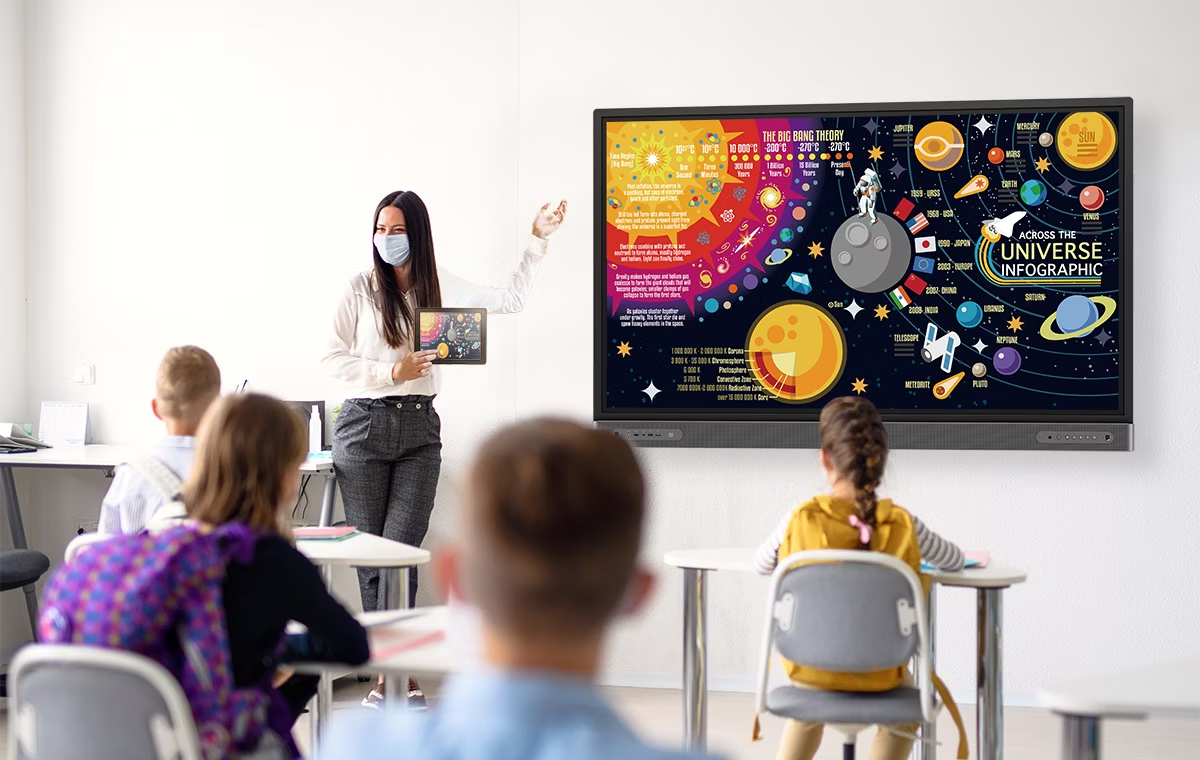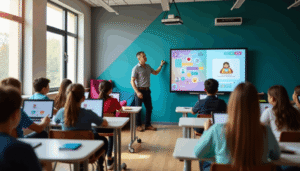Exploring the Dynamics of Classroom 15x: A New Era in Education

Introduction to Classroom 15x
The concept of Classroom 15x emerges as a transformative approach to education, reflecting the evolving dynamics of learning environments in the 21st century. This innovative model is designed to address the diverse needs of students, accommodating various learning styles and promoting collaborative experiences. Classroom 15x signifies a shift from traditional teaching methods towards a more adaptive and flexible framework, where the emphasis is placed on interaction and engagement among learners.
At its core, Classroom 15x aims to create a holistic learning atmosphere that fosters creativity, critical thinking, and problem-solving skills. By integrating technology and encouraging peer-to-peer collaboration, this model allows educators to tailor their instructional strategies to better suit individual student needs. The significance of Classroom 15x lies not only in its adaptability but also in its potential to enhance educational outcomes, preparing students for the complexities of an interconnected world.
The design of Classroom 15x encourages the use of varied resources and teaching methodologies, enabling students to thrive in a space that promotes exploration and curiosity. This approach acknowledges that each student learns differently, and a one-size-fits-all method is often insufficient. As a result, Classroom 15x introduces intentional structures that facilitate teamwork and communication, preparing students for success in both academic and real-world scenarios.
In summary, Classroom 15x represents a crucial advancement in educational practices by prioritizing collaborative learning and individualized approaches. Its foundational principles aim to meet the demands of modern learners, ensuring that education remains relevant and effective in shaping the future of society. Ultimately, as educators and institutions embrace the Classroom 15x model, students are offered a richer learning experience that cultivates essential skills needed for their lifelong journeys.
Key Features of Classroom 15x
Classroom 15x represents a transformative model in educational environments, characterized by several innovative features that distinctly differentiate it from traditional classrooms. One of the primary features is the seamless integration of advanced technology. Classrooms are equipped with interactive whiteboards, tablets, and educational software that encourage students to engage actively with the learning material. This technological approach not only facilitates access to a vast array of resources but also fosters collaboration among students, promoting a communal learning atmosphere.
Another significant aspect of Classroom 15x is its flexible seating arrangements. Unlike the rigid seating of conventional classrooms, Classroom 15x often employs movable furniture, allowing students to choose seating that best suits their learning styles. This flexibility encourages greater comfort and collaboration, facilitating group work and discussions. Students can rotate between different setups, such as individual desks, collaborative pods, or lounge areas, making their educational experience more dynamic and personalized.
Additionally, interactive learning tools are integral to the Classroom 15x environment. These tools include gamified learning platforms, virtual reality experiences, and online quizzes that not only enrich the curriculum but also promote student engagement. By incorporating elements that students find enjoyable, educators can cultivate a more enthusiastic attitude towards learning. Evidence from successful implementations of Classroom 15x highlights marked improvements in student engagement rates and overall academic performance, underpinning its effectiveness as a modern education prototype.
In conclusion, the key features of Classroom 15x—technology integration, flexible seating, and interactive learning tools—create a supportive space that nurtures student engagement and active learning. These elements work in concert to provide personalized educational experiences that adapt to the varied needs of 21st-century learners, ultimately enhancing student outcomes. The implementation of such innovative environments lays the groundwork for future advancements in educational practices.

Benefits of Implementing Classroom 15x
The Classroom 15x model represents a transformative approach to education, offering various benefits that enhance the learning experience for students and educators alike. One of the primary advantages of this model is the improvement in student collaboration. By allowing learners to engage in cooperative group activities, Classroom 15x fosters an environment where students share ideas and work together towards common goals. This collaborative atmosphere not only boosts interpersonal skills but also prepares students for real-world scenarios where teamwork is essential.
Another significant benefit is the increase in student motivation. When students are actively involved in their learning process, they tend to show greater enthusiasm. Classroom 15x promotes interactive teaching methods, such as project-based learning and hands-on activities, which capture learners’ interests and cater to diverse learning styles. Consequently, students are more likely to take ownership of their education, leading to a more engaged classroom environment.
Retention of information is also enhanced within the Classroom 15x framework. This model encourages the application of concepts through practical exercises and discussions, facilitating deeper understanding and memory retention. Educators note that students can recall information more effectively when it is presented in an engaging manner, thereby improving overall academic performance.
Moreover, Classroom 15x cultivates critical thinking and problem-solving skills. By presenting students with complex challenges and encouraging them to analyze and devise solutions collaboratively, this teaching approach equips them with essential skills for navigating an increasingly complex world. Testimonials from both teachers and students highlight the positive shift in learning dynamics, emphasizing how the Classroom 15x model not only elevates academic achievement but also prepares students for future challenges.
Challenges and Solutions in Adopting Classroom 15x
The transition to the Classroom 15x model, envisioned to foster dynamic learning environments, is not without its challenges. One of the primary obstacles schools face is resistance to change. Educators and administrators accustomed to traditional teaching methods may be hesitant to adapt to innovative approaches inherent in Classroom 15x. This resistance can stem from fear of the unknown or a lack of confidence in new pedagogical frameworks. To address this concern, schools must implement comprehensive communication strategies that emphasize the benefits of the Classroom 15x model, highlighting its potential to enhance student engagement and learning outcomes.
Training requirements for educators also present a significant challenge. The Classroom 15x model relies heavily on technology and collaborative learning strategies, which necessitate tailored professional development for teachers. Schools could consider establishing ongoing training programs, including workshops, peer mentoring, and online resources, to ensure all staff members are well-equipped to embrace the new practices. By fostering a culture of continuous learning, educational institutions can better support their educators, alleviating anxieties about implementation.
Logistical considerations, such as resource allocation and classroom layout, further complicate the transition. Schools may require investments in technology and infrastructure to create an effective Classroom 15x environment. Developing a phased implementation plan can help institutions allocate resources more efficiently and reduce the pressure of immediate financial burdens. To provide practical insights, many educational institutions that have successfully navigated these challenges can serve as case studies. For instance, schools that have implemented pilot programs can share their experiences, outlining the methods they used to overcome resistance, train educators, and adapt their physical spaces.
By understanding the challenges and employing strategic solutions, schools can create a supportive framework for adopting the Classroom 15x model, ultimately leading to enhanced educational outcomes.




